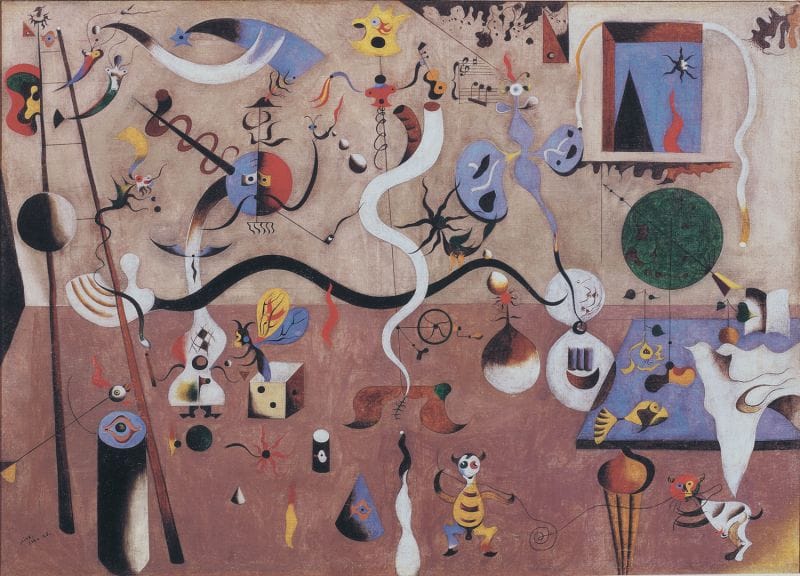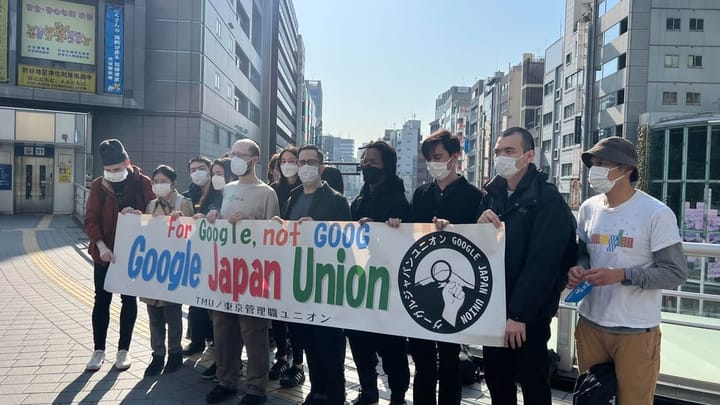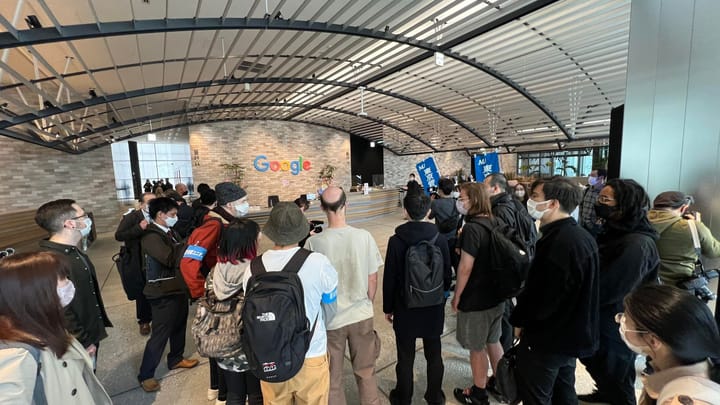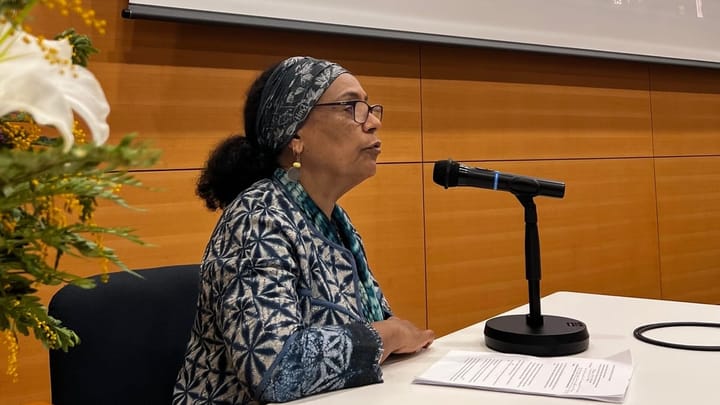A Festival of East Asia Labor Movements in Tokyo
Next week, Tokyo will be host to the first-ever East Asia LaborFest, bringing together workers, labor organizers, and activists from across the region for an exhibition of Asian labor history, seminars and talks about regional and country-specific struggle and film screenings.

Next week, Tokyo will be host to the first-ever East Asia LaborFest from Oct 3-11. The festival, which will bring together workers, labor organizers, and activists from across the region, includes an exhibition of Asian labor history, seminars and talks about regional and country-specific struggle, film screenings, and more. Most of the festival is open to the public.
Ahead of this event, we're republishing an interview published in Asian Labour Reviewwith one of our Unfiltered members, Chie Matsumoto, a labor journalist and labor organizer involved with the festival. In is, she talks about how it took a decade for this event to come to fruition, the goals of the gathering, and the importance of connecting movements in Asia.
Asian Labour Review (“ALR”): How did this idea of an East Asia conference come about?
Chie Matsumoto (Chie): I think it was during the very first time we all met in Chicago at the Labor Notes conference in the United States many years ago. We had a delegation from Japan, and we participated in the Asia meeting at the conference. We decided that we need to be connected. When we meet with other Asian colleagues, we thought: Why do we have to come all the way to the U.S. to connect?” East Asia was becoming a hotspot, and we need to establish strong grassroots connections in the region. We joked that maybe one day we should do it in East Asia.
ALR: Within East Asia itself, there wasn’t a comparable labor conference that was an open space for a diverse gathering of labor activists, as opposed to sectoral conferences or thematic workshops. More than the form, Labor Notes represents a particular current within the labor movement: rank-and-file, democratic, radical organizing. That’s something we want to encourage in Asia through the networks we are building, as well as the ideas and practices we are exchanging and highlighting.
Chie: What’s also been inspiring is that there’s a lot of civil uprising in East Asia. I can only speak for the Japanese community, but as we constantly look to the West, there’s something very exciting happening there, and we want to learn from them. However, we must remind ourselves that there are many great struggles in East Asia that we can learn from.
ALR: Labor activists in East Asia don’t always look at each other’s experiences. Just because we are geographically neighbors, it doesn’t mean that we actually know much about each other’s labor movement. It is not uncommon to also see people emphasize the differences. Over the years, when you bring labor organizers from different countries into the same room for exchange, their first reaction is often, “We’re so different”: our political institutions are different, our labor laws are different, or our workplace culture is different. But once they talk long enough, people actually recognize that there are more similarities than they realize. In this regard, it is also helpful to break down the dichotomy between, say, authoritarianism vis-à-vis democracy: in nominally democratic countries, labor organizers may and do get arrested and jailed.
Chie: When you talk to workers in different countries, we share similar experiences, similar problems, because the economy is globalized. Especially when we get together with East Asian workers, we just have so much in common, the history, the culture, besides working condition problems.
ALR: One idea behind the exhibition is to make more explicit the similar patterns and linkages in the region: the waves of industrialization in East Asia that started earliest in Japan after the Second World War, followed by Korea, Taiwan, Hong Kong, and mainland China. It is interesting to look at how working-class movements emerged and responded to industrialization and deindustrialization. The countries that first industrialized would then move their capital to invest in other countries as labor costs rise and labor conflicts intensify. So, you had Hong Kong, Taiwanese, Japanese, and Korean companies all moving to China since the 1980s, and now Chinese companies, along with others, are moving into Southeast Asia and beyond. It is creating those connections through capital mobility.
Chie: I will give an example of the numerous alliances and joint struggles between Japan and Korea. It’s mainly because a lot of the capitals were Japanese subsidiaries. That’s why Korean labor activists always come to Japan to negotiate with Japanese companies that operate in South Korea. I hope our exhibition and exchange is just the beginning, and we are building on something.
ALR: We are well aware of the divisions between countries: there are geopolitical tensions and sometimes outright hostilities in East Asia. This means that sometimes it is difficult to bring people around due to visa restrictions. Additionally, there are concerns about political repression and safety for participants. However, within each labor movement in each country, there are also numerous divisions, which make international solidarity difficult.
Chie: There are similar challenges in different countries, and especially when you’re trying to democratize unions. This is bound to happen. In Japan, this is mainly due to the history of the “national centers”, which are large confederations of unions. They have different political ideologies, and in the past, there was a significant split and breakup of a major confederation. Now, we have three national centers or confederations, but some of them can’t join forces. Then there is a younger generation of workers who do not share any of that historical conflict, and who would benefit more if labour can actually join hands. That would also make it more possible to expand the international solidarity movement beyond its borders.
ALR: Almost everywhere in East Asia, you see labor movements weakening for some years, if not much longer. What do you see as possibilities, through your work with organizing workers in the media industry, as ways to revive the union movement?
Chie: Over the past few years, our newspaper workers’ union federation has increased women’s participation. These were the people who were not interested. However, a window opened not just to increase the number of underrepresented members, but to change the federation itself and amplify the voices of the underrepresented. That’s one of the reasons why some of these women came forward and were given the freedom to do as they wanted to increase gender equality and representation in the union.
We started in 2019, and every year we would recruit another set of 8-10 women for the executive committee of the federation. We have more applicants than seats. I actually commented at the annual convention that I thought it was unreasonable to have to select 8-10 out of so many applicants just to keep the 30% quota for women. If more women want to participate in union activities, they should all be accepted. I said that the quota system no longer makes sense. If you make space for the underrepresented, there will be people who will rise to the occasion.
To renew the labor movement, we need to stop trying to continue with how things used to be. There is often a list of things that you’re supposed to do that was passed down through generations, but I think it needs to be revised. If there is a new generation, a new group of people, or a new community participating, and if what we have doesn’t meet their needs, then we need to revise it and try to incorporate new ideas. We shouldn’t be afraid to practice new ideas. That’s really difficult, because there are people who have been in the union movement for 20 years, including myself. But I believe if there is something new, let’s try it out.
ALR: For the exhibition and exchange in Tokyo this year, we also want to feature labor history in the exhibition. Over the years, I realized that when you bring people from different countries together, they often couldn’t quite understand each other’s current struggles because there is a lack of context of why they’re doing this and not that, why they are making certain choices, or choosing certain strategies over others, or why organizations are structured and look like they do now. Much of it could be better understood with an understanding of the history of the movements, the conditions they found themselves in, and the choices they made. Once you have that baseline understanding, it makes it a lot easier to deepen exchanges.
Chie: This is going to be quite exciting for me. We will have many of our comrades from East Asia. It’s not just sitting down and listening to someone talk at you – there will be an exhibition of our common labor history and labor struggles. We can also see how much we share and what strategies we should share, and we should think together in these difficult times. There are also screenings of documentaries on labor struggles from different countries. It is actually very inspiring because we will have union activists from these movies discussing their experiences. There are numerous learning opportunities and meeting opportunities, as well as new encounters and developments.
ALR: We intentionally made it a week-long event. We want people to be able to come any time during the week, and of course, they don’t have to stay for the whole week. However, we want people to return again and again, to explore different parts of the exhibition, attend events on various days, meet new people, and engage in informal conversations.
When we attend a typical conference, the most interesting part – I’ve heard it from almost everyone – is the tea breaks, lunch breaks, dinners, and conversations after the formal programs conclude. That’s where you can speak with each other and have relaxed, deep conversations. Of course, we’ll still have a variety of panels and workshops for people to attend, where they can hear others share their work.
I actually don’t encourage people to be stuck in endless panels. Instead, hang around in the exhibition hall, find people you want to chat with, organize your own side lunch, dinner, or afternoon tea, or coffee breaks, or your own side discussions. It is an intentional space for people to have conversations and chance encounters. You meet someone whose activism or ideas you find really interesting, someone you have known for many years but never got around to meeting again, or someone doing very different work that you would not have met otherwise.
We truly want this to be a space where people can experience surprises and joy.
East Asia Labor Fest takes place Oct 3-11 at Sophia University Yotsuya Campus (7-1 Kiocho, Chiyoda City, Tokyo).
Translation will be provided between English, Japanese, Chinese and Korean, but you must bring our own mobile device.



Comments ()